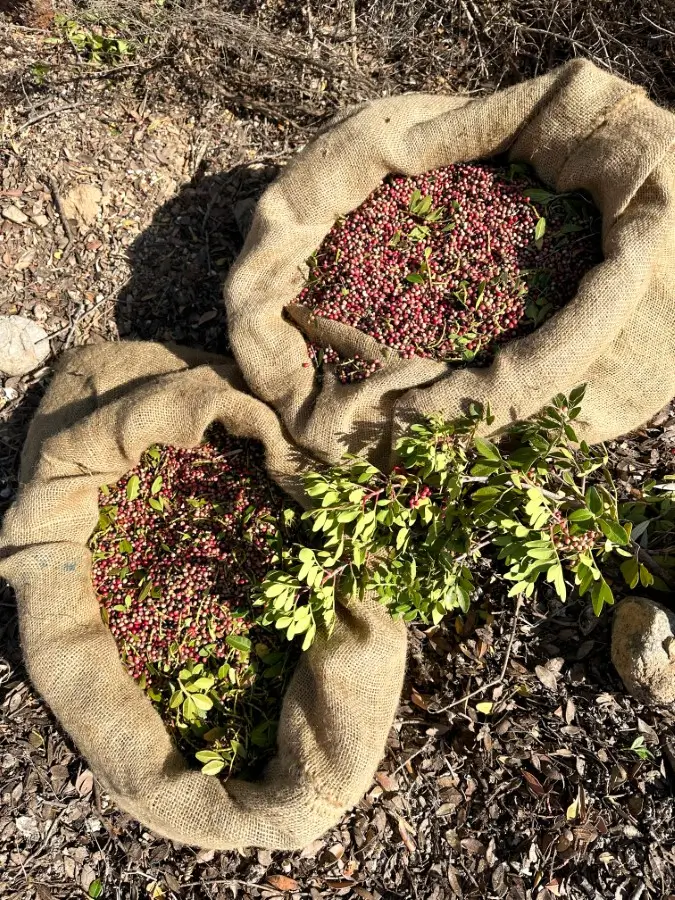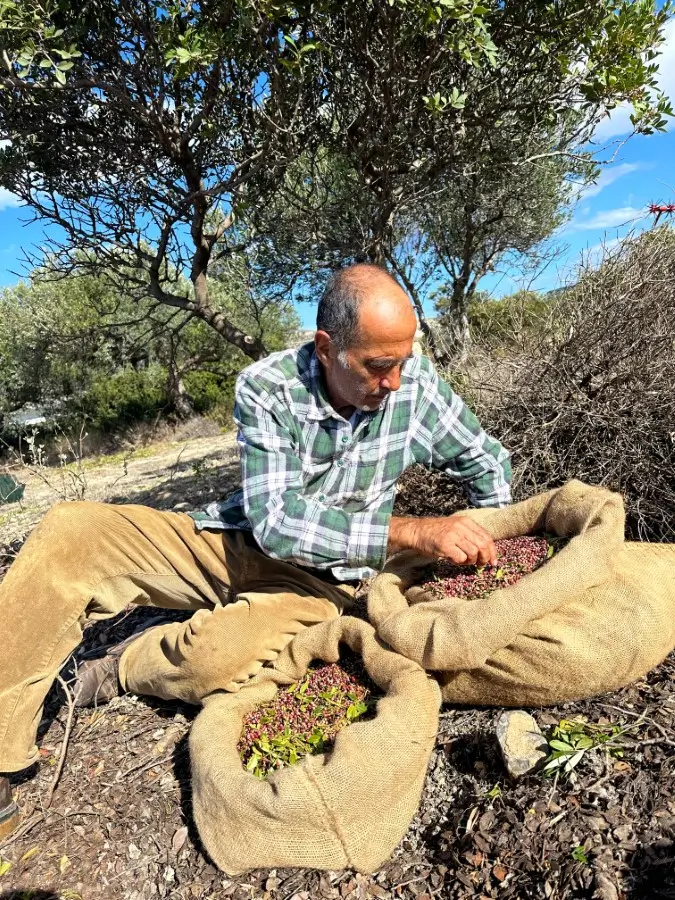The mastic tree (Pistacia lentiscus)
Description
An expansive shrub that can become a tree, thriving in the Mediterranean, resistant to drought and winds but not to frost. Therefore, it is not found in high altitudes. It belongs to the Pistacia family along with Pistacia communis and Pistacia Terebinthus. Commercial pistachios are mostly grafted onto the rootstock of the latter (referred to as “tsikoudia” in Crete). I am not aware of any studies, and it would be interesting to explore the possibility of grafting pistachios onto mastic trees.
Importance, history, uses in gastronomy and therapy
Today, the mastic tree is often perceived as a nuisance plant due to its expansiveness, especially when its presence interferes with cultivation. However, it is a valuable plant for soil and biodiversity. It helps retain soil on sloping terrain, making it ideal for reforestation, and serves as a valuable habitat for wildlife. Its leaves enrich the soil, and the well-known “schinos soil” is purchased for our potted plants. A solution for coexistence is to limit its growth and shape it into a tree (see photo) where it interferes with cultivation, and certainly not to eradicate it.
Although it is rich in antioxidants and anti-inflammatory compounds, and its parts (such as fruits, leaves, and resin) are used in diet, the mastic tree doesn’t enjoy widespread recognition. An exception is the wonderful work done in the Greek island of Chios with the cultivation of mastic and the local variety Pistacia lentiscus var. chia. Cyprus also stands out for promoting and incorporating mastic into its gastronomic treasures.
To have a comprehensive view, it’s important to mention that the collection and consumption of mastic resin are traditional practices in the Mediterranean countries of North Africa (Morocco, Algeria, Tunisia) as well. In the Greek region, mastic fruit was used on the islands and coastal areas of the Aegean Sea, where the famous “mastic bread” was made. In Cyprus, it is used in the production of cookies and bread, as well as a flavoring in sausages, while there are historical references to its use in Sardinia in the 16th century. It is also a common and ancient practice in the mountain villages of Crete to place a small branch of mastic in containers with olives to keep them firm.
In various ancient texts, some dating back to the Roman and Hellenistic periods, there are references to the therapeutic properties and uses of the leaves and fruits of the mastic tree. Modern scientific research confirms this. Apart from the therapeutic action of the resin (mastic in Chios), the other parts of the plant are rich* in terpenoids and polyphenols with potent anti-inflammatory, antimicrobial, and antioxidant properties.
Our products
The intense aroma of the mastic fruit, which leans slightly towards mastic resin, and its tangy, slightly spicy flavor are highlighted and stand out with its infusion in extra virgin olive oil. This particular product is unique worldwide and is not found in international literature. It is the Mediterranean pink pepper that complements, whether as a dried fruit or infused in extra virgin olive oil, the entire range of gastronomy: fish, meat, sauces, salads, sweets, and desserts.




This is very educational and interesting. My doctor just recommended that I get it in the capsule form to help with my out of control digestion.